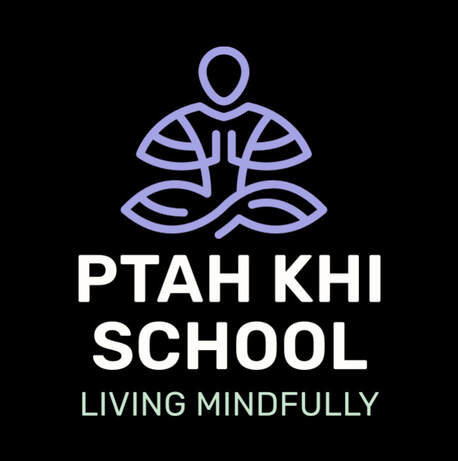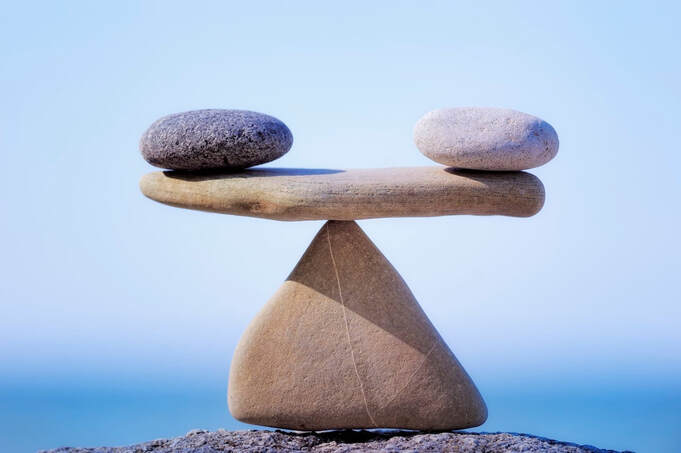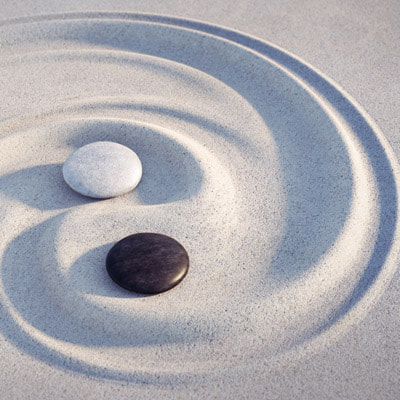MINDFULNESS
The Art of Mental Boxing

In this busy world of ours, the mind gets pulled from one place to the next, scattering thoughts everywhere and leaving us stressed, highly-strung and often anxious. Mental boxing is a term we use to emphasise the importance of mindfulness also works for people who are struggling to keep up with the constant demands of the modern world. We are exploring the potential of mindfulness to help people build resilience at critical periods in their lives: from couples preparing for a new baby, to children and young people at school and college; and from adults in their work and family life, to older adults and those who care for them when they become mentally or physically infirm.
Most of us don’t have five minutes to sit down and relax, let alone 30 minutes or more for a session of meditation! so we always suggest to start with 90seconds and build from there and that's during the day; before you go to sleep a few moments before you get into bed you should spend reflexing upon the day activities balancing and excepting the good or bad deeds of the day then let go of them so to develop some cultivate mental spaciousness and a positive mind-body balance.
Most of us don’t have five minutes to sit down and relax, let alone 30 minutes or more for a session of meditation! so we always suggest to start with 90seconds and build from there and that's during the day; before you go to sleep a few moments before you get into bed you should spend reflexing upon the day activities balancing and excepting the good or bad deeds of the day then let go of them so to develop some cultivate mental spaciousness and a positive mind-body balance.
Check out the most recent talk on mindfulness with Sahu on the Hidden Science Academy.
How do I practice mindfulness meditation?
The ability for us to be mindful is a skill that can be practised in any moment of day or night, just taking a moment to breathe, and observe your surroundings allows us to become present in the moment, however it takes time to develop this ability. So, if you are disturbed by someone ringing at the door, or the vibration of your phone; don't rush to it, take your time appreciate the moment that you're in acknowledge it and then go forward.
|
The society that we live is constantly inundated us with news and information from friends, family, and the wider world. So, below are some examples of some mental boxing mindfulness practices that we can get involved in, to ward off influences of our environment and to put at rest the inner chatter of the mind.
|
The Basics of Mindfulness Practice
Mindfulness offers us the opportunity to not be emotionally engaged in every situation we find ourselves in, it gives us an opportunity to stop, think, and breathe; so the choices and the decisions that we make our for our best interest.
Here’s how to connect with mindfulness throughout the day:
Practice daily and build up over time and always remember 'all is mind and everything is mental'.
Here’s how to connect with mindfulness throughout the day:
- Give yourself some time. Start with 90sec then 2mins, slowly build up to 15mins; anywhere, any time or at home anytime.
- Become the Watcher/Observer. The hardest thing as a human is to look at the world and not have a thing to say about it, this doesn't happen, nevertheless we are aiming to pay attention to the present moment, without judgment.
- Let your judgments roll by. Letting go starts with telling yourself to let go, when we notice judgments arise during our practice, we can make a mental note of them, and let them pass by.
- Return to observing the present moment. Naturally our minds will get distracted and thoughts can take over our mind and we don't even notice. So constantly reminding ourselves to be present, to observe our breath, will bring us back or take us out of a deep state of thought. The idea is to develop a pattern of breaking your thought stream and connecting back with your environment.
- Be kind to yourself and you're wondering mind. It's time to be compassionate towards yourself and understanding when we appreciate that our minds wonder and how easily distracted we can be, when this happens don't be hard on yourself except it for what it is and move on.
Practice daily and build up over time and always remember 'all is mind and everything is mental'.
How to Meditate Mindfully

The purpose of this meditation is to connect with your breath as it is is something that is with you constantly throughout our lives. The breath can be an anchor to bring you back to your centre, when breathing in we are conscious and aware that we are breathing in and when breathing out we are conscious and aware we are breathing out this is the way we breathe, knowing when we breathe in and out. You don't have to breathe in a special way or use any special technique just breathe and if you become distracted and forget that you're breathing it's okay just go back to your breath when you realise your attention wasn't on your breath.
A Simple Meditation Practice:
A Simple Meditation Practice:
- Sit comfortably. Find a spot that gives you a stable, solid, comfortable seat.
- Notice what your legs are doing. If on a cushion, cross your legs comfortably in front of you. If on a chair, rest the bottoms of your feet on the floor.
- Straighten your upper body—but don’t stiffen. Your spine has natural curvature. Let it be there.
- Notice what your arms are doing. Situate your upper arms parallel to your upper body. Rest the palms of your hands on your legs wherever it feels most natural.
- Soften your gaze. Drop your chin a little and let your gaze fall gently downward. It’s not necessary to close your eyes, just allow your eyes to open just enough to allow a streams of light to enter through.
- Feel your breath. Bring your attention to the physical sensation of breathing: the air moving through your nose or mouth, the warmth/or coldness of the air as it moves up your nostrils, the rising and falling of your belly, or your chest.
- Notice when your mind wanders from your breath. Inevitably, the mind wanders however that's what your mind is supposed to do. So, when your attention leave the breath and wander to other places. Don’t worry. There’s no need to block or eliminate thinking. When you notice your mind wandering gently return your attention to the breath.
- Be kind about your wandering mind. You may find your mind wandering constantly--that’s normal, too. Instead of wrestling with your thoughts, practice observing them without reacting. Just sit and pay attention. As hard as it is to maintain, that’s all there is. Come back to your breath over and over again, without judgment or expectation.
- When you’re ready, gently lift your gaze (if your eyes are closed, open them). Take a moment and notice any sounds in the environment. Notice how your body feels right now. Notice your thoughts and emotions.
Also Try Other Mental Boxing Exercises....
1. One Minute Breathing
This exercise can be done anywhere at any time, standing up or sitting down. All you have to do is focus on your breath for just one minute. Start by breathing in and out slowly, holding your breath for a count of six once you’ve inhaled. Then breathe out slowly, letting the breath flow effortlessly out back into the atmosphere.
Naturally your mind will try and wander amidst the valleys of its thoughts, but simply notice these thoughts, let them be for what they are and return to watching your breath.
Literally watch your breath with your senses as it enters your body and fills you with life, and then watch it work its way up and out of your body as the energy dissipates into the universe.
If you’re someone who thought they’d never be able to meditate, guess what? You’re half way there already! If you enjoyed one minute of this mind-calming exercise, why not try two?
2. Mindful Observation
This exercise is simple but incredibly powerful. It is designed to connect us with the beauty of the natural environment, which is easily missed when we’re rushing around…
Pick a natural organism within your immediate environment and focus on watching it for a minute or two. This could be a flower or an insect, the clouds or the moon.
Don’t do anything except notice the thing you are looking at. But really notice it. Look at it as if you are seeing it for the first time.
Visually explore veery aspect of this glorious organism of the natural world. Allow yourself to be consumed by its presence and possibilities. Allow your spirit to connect with its role and purpose in the world. Allow yourself just to notice and ‘be’.
3. Touch Points
This exercise is designed to make us appreciate our lives by slowing the pace down, coming into purer awareness and resting in the moment for a while.
Think of something that happens every day more than once, something you take for granted, like opening a door for example. At the very moment you touch the door knob to open the door, allow yourself to be completely mindful of where you are, how you feel and what you are doing. Similarly, the moment you open your computer to start work, take a moment to appreciate the hands that let you do this, and the brain that will help you use the computer.
The cues don’t have to be physical ones. It could be that every time you think something negative you take a mindful moment to release the negative thought, or it could be that every time you smell food you take a mindful moment to rest in the appreciation of having food to eat.
Choose a touch point that resonates with you today. Instead of going through the motions on auto-pilot, stop and stay in the moment for a while and rest in the awareness of this blessed daily activity.
This exercise can be done anywhere at any time, standing up or sitting down. All you have to do is focus on your breath for just one minute. Start by breathing in and out slowly, holding your breath for a count of six once you’ve inhaled. Then breathe out slowly, letting the breath flow effortlessly out back into the atmosphere.
Naturally your mind will try and wander amidst the valleys of its thoughts, but simply notice these thoughts, let them be for what they are and return to watching your breath.
Literally watch your breath with your senses as it enters your body and fills you with life, and then watch it work its way up and out of your body as the energy dissipates into the universe.
If you’re someone who thought they’d never be able to meditate, guess what? You’re half way there already! If you enjoyed one minute of this mind-calming exercise, why not try two?
2. Mindful Observation
This exercise is simple but incredibly powerful. It is designed to connect us with the beauty of the natural environment, which is easily missed when we’re rushing around…
Pick a natural organism within your immediate environment and focus on watching it for a minute or two. This could be a flower or an insect, the clouds or the moon.
Don’t do anything except notice the thing you are looking at. But really notice it. Look at it as if you are seeing it for the first time.
Visually explore veery aspect of this glorious organism of the natural world. Allow yourself to be consumed by its presence and possibilities. Allow your spirit to connect with its role and purpose in the world. Allow yourself just to notice and ‘be’.
3. Touch Points
This exercise is designed to make us appreciate our lives by slowing the pace down, coming into purer awareness and resting in the moment for a while.
Think of something that happens every day more than once, something you take for granted, like opening a door for example. At the very moment you touch the door knob to open the door, allow yourself to be completely mindful of where you are, how you feel and what you are doing. Similarly, the moment you open your computer to start work, take a moment to appreciate the hands that let you do this, and the brain that will help you use the computer.
The cues don’t have to be physical ones. It could be that every time you think something negative you take a mindful moment to release the negative thought, or it could be that every time you smell food you take a mindful moment to rest in the appreciation of having food to eat.
Choose a touch point that resonates with you today. Instead of going through the motions on auto-pilot, stop and stay in the moment for a while and rest in the awareness of this blessed daily activity.
4. Mindful Listening
This exercise is designed to open your ears to sound in a non-judgemental way. So much of what we see and hear on a daily basis is influenced by thoughts of past experiences. Mindful listening helps us leave the past where it is and come into a neutral, present awareness.
Select a new piece of music from your music collection, something you’ve never heard before but makes you wonder what it might sound like.
Close your eyes and use headphones if you can. Don’t think about the genre or the artist. Instead, allow yourself to get lost in the journey of sound for the duration of the song. Allow yourself to explore the intricacies of the music. Let your awareness climb inside the track and play among the sound waves.
The idea is to just listen and allow yourself to become fully entwined with what is being played/sung, without preconception or judgement of the genre, artist, lyrics, instrumentation or its origin.
If you don’t have any music to hand that you’ve never listened to before, turn on the radio and turn the dial until something catches your interest.
If you don’t have a radio then take a moment to simply listen to the sounds in your environment. Don’t try and determine the origin or type of sounds you hear, just listen and absorb the experience of their texture and resonance with your being. If you recognise the sound then label it with what you know it to be and move on, allowing your ears to catch new sounds.
5. Fully Experiencing a Regular Routine
The intention of this exercise is to cultivate contentedness in the moment, rather than finding yourself caught up in that familiar feeling of wanting something to end so that you can get on to doing something else. It might even make you enjoy some of those boring daily chores too!
Take a regular routine that you find yourself “just doing” without really noticing your actions. For example, when cleaning your house, pay attention to every detail of the activity.
Rather than a routine job or chore, create an entirely new experience by noticing every aspect of your actions. Feel and become the motion of sweeping the floor, notice the muscles you use when scrubbing the dishes, observe the formation of dirt on the windows and see if you can create a more efficient way of removing it.
Don’t labour through thinking about the finish line, be aware of every step and enjoy your progress. Take the activity beyond a routine by merging with it physically and mentally.
6. A Game of Fives
In this mindfulness exercise, all you have to do is notice five things in your day that usually go unnoticed and unappreciated. These could be things you hear, smell, feel or see.
For example, might see the walls of your front room, hear the birds in the tree outside in the morning, feel your clothes on your skin as you walk to work, or smell the flowers in the park, but are you truly aware of these things and the connections they have with the world?
Let your creative mind explore the wonder, impact and possibilities these usually unnoticed things have on your life. Allow yourself to fall awake into the world and fully experience the environment.
By becoming mindful of who we are, where we are, what we are doing and the purpose, if any at all, and how everything else in our environment interacts with our being, we cultivate a truer awareness of being.
This helps us learn to identify and reduce stress and anxiety and difficult, painful and perhaps frightening thoughts, feelings and sensations.
Mindfulness exercises help centre the mind and restore balance to our lives, tempering that “monkey mind” that persistently leaps from branch to branch. Rather than being led by thoughts and feelings, often influenced by past experiences and fears of future occurrences, we are able to live with full attention and purpose in the moment.
This exercise is designed to open your ears to sound in a non-judgemental way. So much of what we see and hear on a daily basis is influenced by thoughts of past experiences. Mindful listening helps us leave the past where it is and come into a neutral, present awareness.
Select a new piece of music from your music collection, something you’ve never heard before but makes you wonder what it might sound like.
Close your eyes and use headphones if you can. Don’t think about the genre or the artist. Instead, allow yourself to get lost in the journey of sound for the duration of the song. Allow yourself to explore the intricacies of the music. Let your awareness climb inside the track and play among the sound waves.
The idea is to just listen and allow yourself to become fully entwined with what is being played/sung, without preconception or judgement of the genre, artist, lyrics, instrumentation or its origin.
If you don’t have any music to hand that you’ve never listened to before, turn on the radio and turn the dial until something catches your interest.
If you don’t have a radio then take a moment to simply listen to the sounds in your environment. Don’t try and determine the origin or type of sounds you hear, just listen and absorb the experience of their texture and resonance with your being. If you recognise the sound then label it with what you know it to be and move on, allowing your ears to catch new sounds.
5. Fully Experiencing a Regular Routine
The intention of this exercise is to cultivate contentedness in the moment, rather than finding yourself caught up in that familiar feeling of wanting something to end so that you can get on to doing something else. It might even make you enjoy some of those boring daily chores too!
Take a regular routine that you find yourself “just doing” without really noticing your actions. For example, when cleaning your house, pay attention to every detail of the activity.
Rather than a routine job or chore, create an entirely new experience by noticing every aspect of your actions. Feel and become the motion of sweeping the floor, notice the muscles you use when scrubbing the dishes, observe the formation of dirt on the windows and see if you can create a more efficient way of removing it.
Don’t labour through thinking about the finish line, be aware of every step and enjoy your progress. Take the activity beyond a routine by merging with it physically and mentally.
6. A Game of Fives
In this mindfulness exercise, all you have to do is notice five things in your day that usually go unnoticed and unappreciated. These could be things you hear, smell, feel or see.
For example, might see the walls of your front room, hear the birds in the tree outside in the morning, feel your clothes on your skin as you walk to work, or smell the flowers in the park, but are you truly aware of these things and the connections they have with the world?
- Are you aware of how these things really benefit your life and the lives of others?
- Do you really know what these look and sound like?
- Have you ever noticed their finer, more intricate details?
- Have you thought about what life might be without these things?
- Have you thought about how amazing these things are?
Let your creative mind explore the wonder, impact and possibilities these usually unnoticed things have on your life. Allow yourself to fall awake into the world and fully experience the environment.
By becoming mindful of who we are, where we are, what we are doing and the purpose, if any at all, and how everything else in our environment interacts with our being, we cultivate a truer awareness of being.
This helps us learn to identify and reduce stress and anxiety and difficult, painful and perhaps frightening thoughts, feelings and sensations.
Mindfulness exercises help centre the mind and restore balance to our lives, tempering that “monkey mind” that persistently leaps from branch to branch. Rather than being led by thoughts and feelings, often influenced by past experiences and fears of future occurrences, we are able to live with full attention and purpose in the moment.
Here are five reasons to practice mindfulness?
- Understand your pain. Pain is a fact of life, but it doesn’t have to rule you. Mindfulness can help you reshape your relationship with mental and physical pain.
- Connect better. Ever find yourself staring blankly at a friend, lover, child, and you’ve no idea what they’re saying? Mindfulness helps you give them your full attention.
- Lower stress. There’s lots of evidence these days that excess stress causes lots of illnesses and makes other illnesses worse. Mindfulness decreases stress.
- Focus your mind. It can be frustrating to have our mind stray off what we’re doing and be pulled in six directions. Meditation hones our innate ability to focus.
- Reduce brain chatter.The nattering, chattering voice in our head seems never to leave us alone. Isn’t it time we gave it a little break?










